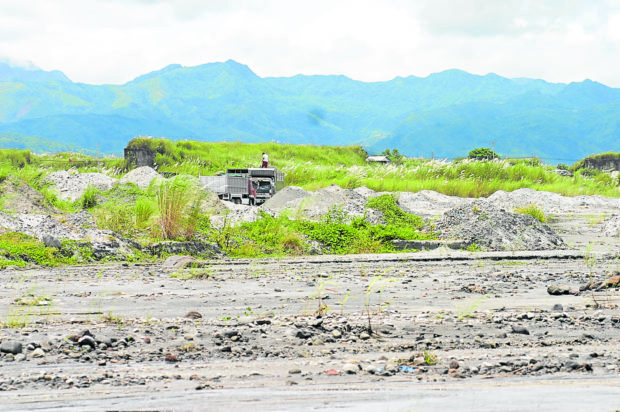
MONEY FROM SAND The slopes of Mt. Pinatubo are rich in sand that rains eventually wash down to rivers in Central Luzon. Sand quarrying in waterways in Pampanga, Zambales and Tarlac brings income to local governments in areas once devastated by the volcanic eruption in 1991. —TONETTE OREJAS
CITY OF SAN FERNANDO, Pampanga, Philippines — Income from taxes and fees on Mt. Pinatubo’s sand and gravel in Pampanga has contributed more funds to the provincial government’s efforts to confront the new coronavirus disease (COVID-19) and its regular programs, according to a top provincial official.
Quarry revenues reached almost P289.8 million in the last five months when community quarantine against COVID-19 was eased, said provincial administrator Charlie Chua.
Highest collection
From May 18 to Sept. 20, quarry income raised total quarry collections to P730 million since July 2019, he said.
The provincial government’s COVID-19 responses include contact tracing, maintaining three isolation and recovery facilities, a swabbing center, two mobile swabbing clinics, testing and quarantining returning overseas Kapampangan, and food support in communities placed on localized lockdown.
Chua said the highest collection of taxes and fees related to the hauling of Pinatubo’s sand and gravel was recorded in September at P68.402 million. Haulers of nonmetallic minerals suspended operations from March 20 to May 17 after Pampanga was put under enhanced community quarantine (ECQ) and modified ECQ.
Towns and cities, including villages, also benefit from quarrying, with the P250 tax shared at 40 percent and 30 percent, respectively, in accordance with a provision of the Local Government Code of 1991. The provincial government gets 30 percent of that amount.
Noel Lacadin, chief geologist of the regional Mines and Geosciences Bureau, said a study should be made to determine if the volume of sand from Mt. Pinatubo is nearly depleted.
The US Geological Survey estimated that the volcano, which erupted in 1991, belched out lahar (ash, sand, mud, pumice stones and molten rocks soaked in water) equivalent to 300 million truckloads.
—Tonette Orejas